Mango ginger ice cream
The mango is not only a delicious fruit but also an old Hindu symbol for spiritual perfection. And when it comes to flavours, some argue that perfection stems from the proper use of contrasts. So why not test combining the sweet mango with the heat and particular fragrance of fresh ginger? The result should be pleasing to everyone who would like to put an exotic touch to the great mango flavour and experience an ice cream flavour somewhat out of the ordinary.
The mango is a stone-fruit, and like most fruits, it contains a lot of healthy things: vitamins, dietary fibre, and essential nutrients. It also happens to be very popular – even amongst some gods.
Since mango is the national fruit of India, it seems appropriate to tell a little mango-related story about the Hindu god Ganesha:
One day, Ganesha’s parents (the deities Shiva and Parvati) had received a special mango of knowledge from a visiting sage. Deciding to have a contest between their two sons, Shiva and Parvati stated that the first one who could circumnavigate the world three times would get the mango. Ganesha’s brother immediately took off (on a peacock), while Ganesha decided to first finish off his favourite snacks. When Ganesha finally finished eating, his brother had already got around the world twice. But Ganesha simply went over to his parents, walked around them three times and then claimed the mango. When asked why he thought he had won, he simply replied “You both are my world”. Delighted by the reply, his parents gave him the mango, which he happily devoured on the spot.
Whether this is a good example of lateral thinking, deep spiritual insight or sucking up to parents (or possibly all three), I leave for you to ponder 🙂 .
Most mangoes are sweet and mango is – in itself – a very nice ice cream flavour. But sometimes, it is fun to create a bit more unusual combinations. And ginger is not just any spice, but also has a long history as medicinal plant. Combining the two definitely creates a nice flavour-mix out of the ordinary.
Preparing an enlightened custard base
For such a perfect fruit as mango, a nice and classic egg-based custard seemed to be a suitable foundation – I turned to my French-style standard base for inspiration (but you could certainly test using other ice cream bases too!).
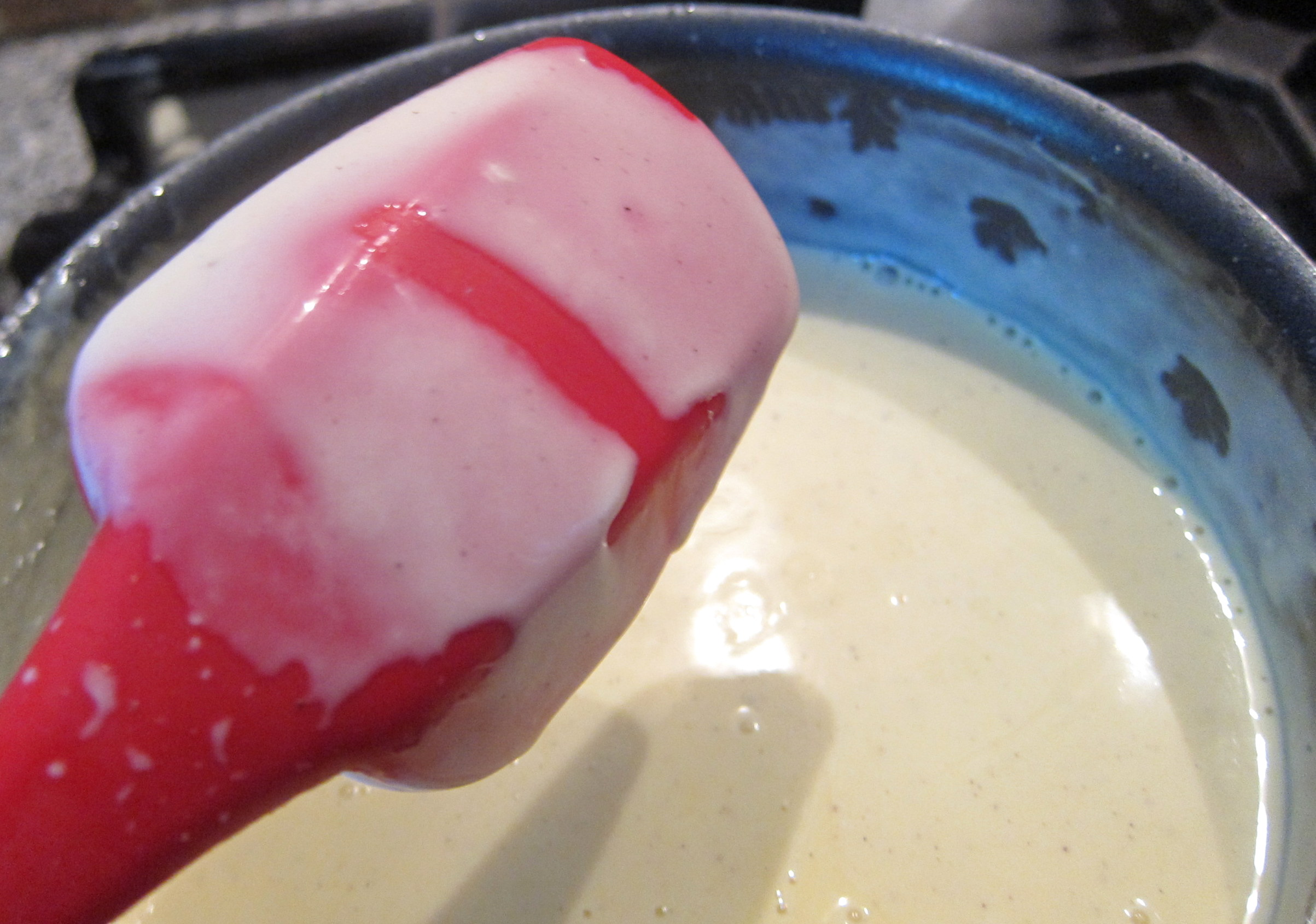
The Spoon test indicates that the custard base has reached the desired ‘nappe stage’. The base should now be cooled down as quickly as possible.
For detailed instructions on how to prepare egg-based custard, have a closer look here.
To summarise, the egg yolks and the sugar are combined and whisked together in a bowl. The dairy, along with the vanilla and a little salt, is heated to fairly hot (but far from boiling) in a saucepan. Then, the dairy is, slowly and little by little, drizzled into the egg yolk-sugar mix, under constant whisking (the “tempering phase”). Once all dairy and egg yolk mix have been combined, put on the heat and bring the custard base in the range of about 82-84º Celsius (180-183ºF) (use a thermometer for greatest accuracy. Otherwise, rely on the quite reliable Spoon-test). Once the custard has thickened as it should (reached the ‘nappe stage’) , quickly take it off the heat and cool down as fast as possible.
Adding the mango and the ginger
Making mango purée out of ripe mangoes is fairly unproblematic – peel the fruits and churn the fruit meat in a food processor or with a hand mixer. When the custard base has cooled down, it is time to add the mango purée and the freshly grated ginger and whisk well. Note that you don’t really need that much ginger, just about a tablespoon or so – the small amount used will, however, still make its flavour-mark on the final ice cream 🙂
A special note on fresh ginger in ice creams
Some of you may have heard that adding fresh ginger to dairy can cause curdling. And fresh ginger does contain an enzyme which can curdle dairy. But the difficulties typically appear when fresh ginger is combined with heated dairy (for instance, a custard in the making). Since we are adding the fresh ginger to the already prepared and cooled-down custard base, there should be no problems.
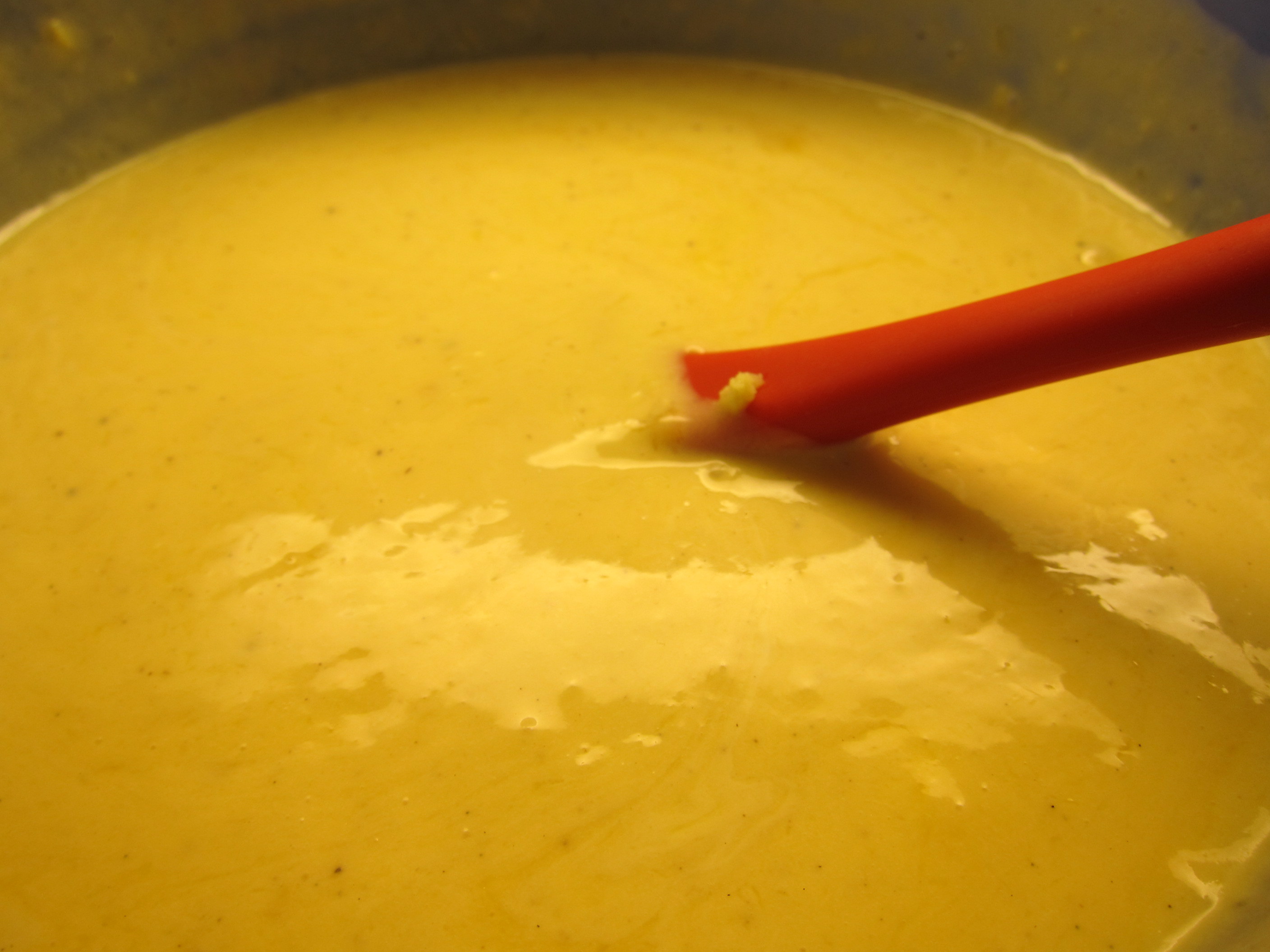
At this stage, the cool custard has just been mixed with the puréed mango and the grated fresh ginger
Put the ice cream base in the refrigerator to chill further, at least a few hours and preferably over night in order to achieve optimal consistency. Then churn the chilled base in your ice cream machine according to instructions.
No ice cream machine? No problems – then still-freeze the ice cream base in your freezer, and do the churning yourself (further instructions on how best to do that can be found in this post).
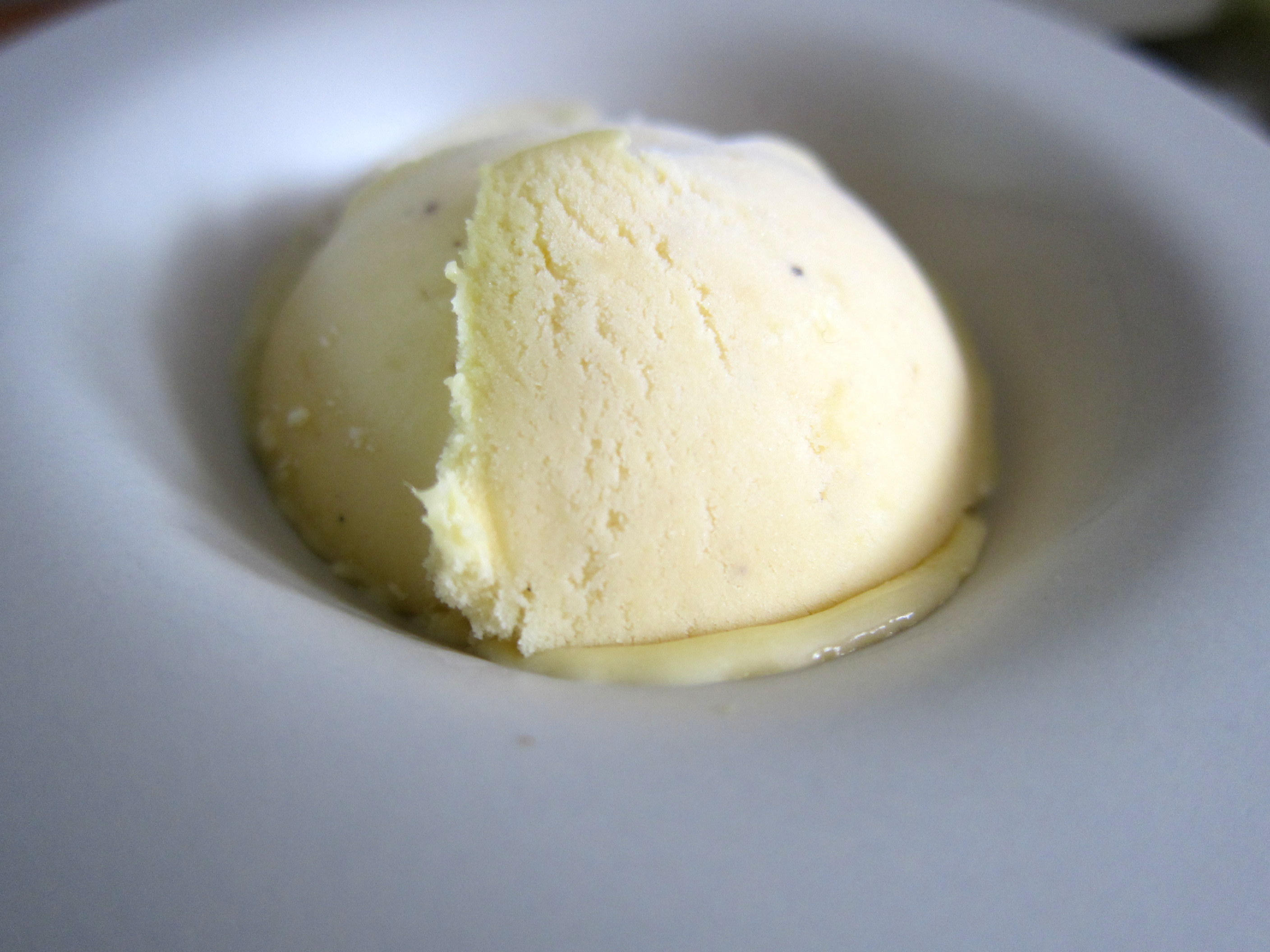
Mango ginger ice cream. The visible spots? – Vanilla! And yes, I was also quite surprised to see how the colours turned out in the (frozen) end.
Ginger is a fascinating spice and when combined with sweet mango, the two manage to create quite a unique ‘third flavour’. And embedding this flavour in a trusty custard base ensures all the smoothness, richness and body one could wish for in a good ice cream. Sure, ordinary mango ice cream can be very nice. But every adventurous ice cream lovers who long for something sweet, special and out of the ordinary should try this elegant, exotic flavour.
- 400 ml (1.7 cups) cream
- 200 ml (0.85 cup) whole milk
- 6 egg yolks
- 125 ml (0.5 cup) + 100 ml (about 0.4 cup) sugar
- 1 teaspoon vanilla extract/powder of good quality
- About 400 ml (1.7 cups) mango purée (= about 2 ripe mango fruits)
- About 1 tablespoon finely grated fresh ginger
- About 1 good pinch of salt
- Prepare a classic ice cream custard:Pour the cream and the milk together in a saucepan. Add the vanilla and the salt.Bring to a simmering almost-boil.
- In another bowl, whisk together the egg yolks and the sugar.
- Slowly, begin to pour – little by little – the recently heated dairy into the yolk-sugar mixture while whisking (the tempering stage).
- When everything has been well whisked together, pour the blend into the saucepan and – while whisking fairly constantly – bring to a temperature in the range of about 82-84º C(180-183ºF). If in doubt about the temperature, make the Spoon-test (described elsewhere on the blog).
- Take the ice cream base from the heat and cool it down as quickly as possible (by using an iced water bath, for example).
- Once the base has cooled down, add the puréed mango and the finely grated fresh ginger.
- Put the ice cream base in the refrigerator to chill and mature, preferably over night.
- Then, churn the chilled base in your ice cream machine according to instructions (or, in case you have no machine, still-freeze in your refrigerator:see the post on how to best do that).
- Put in a freezer-safe container, cover with plastic film and lid and store in the freezer.
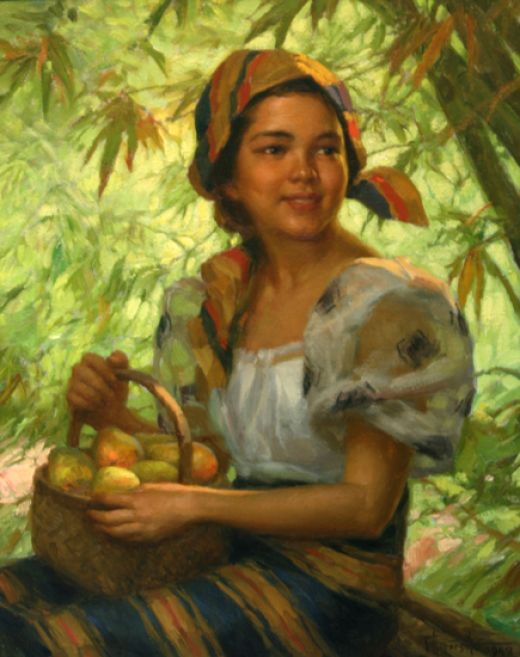
‘A Basket of Mangoes’, by Philippine painter Amorsolo (1949). Did you know that the mango is the national fruit not only of India, but also of Pakistan and of the Philippines?
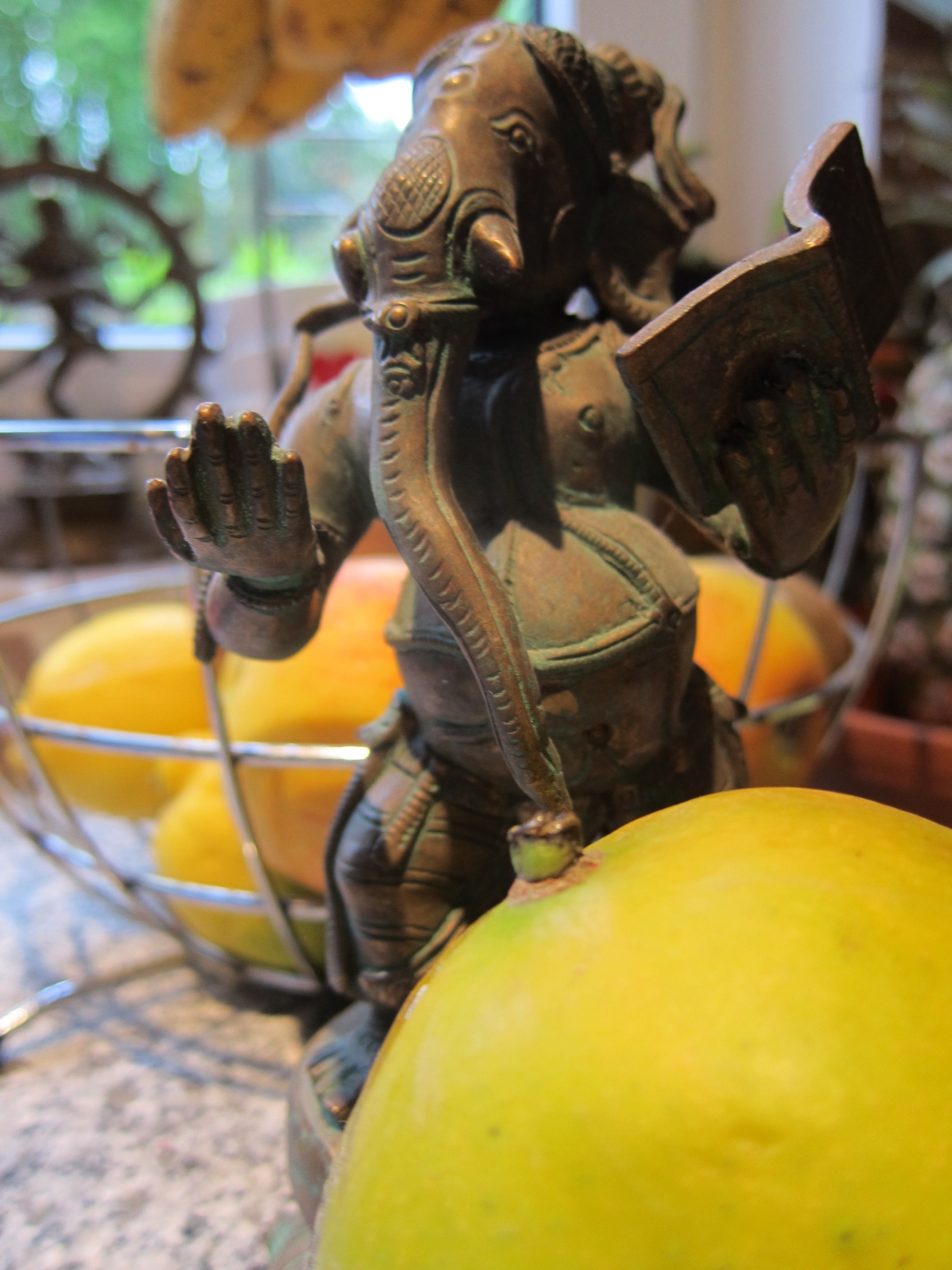
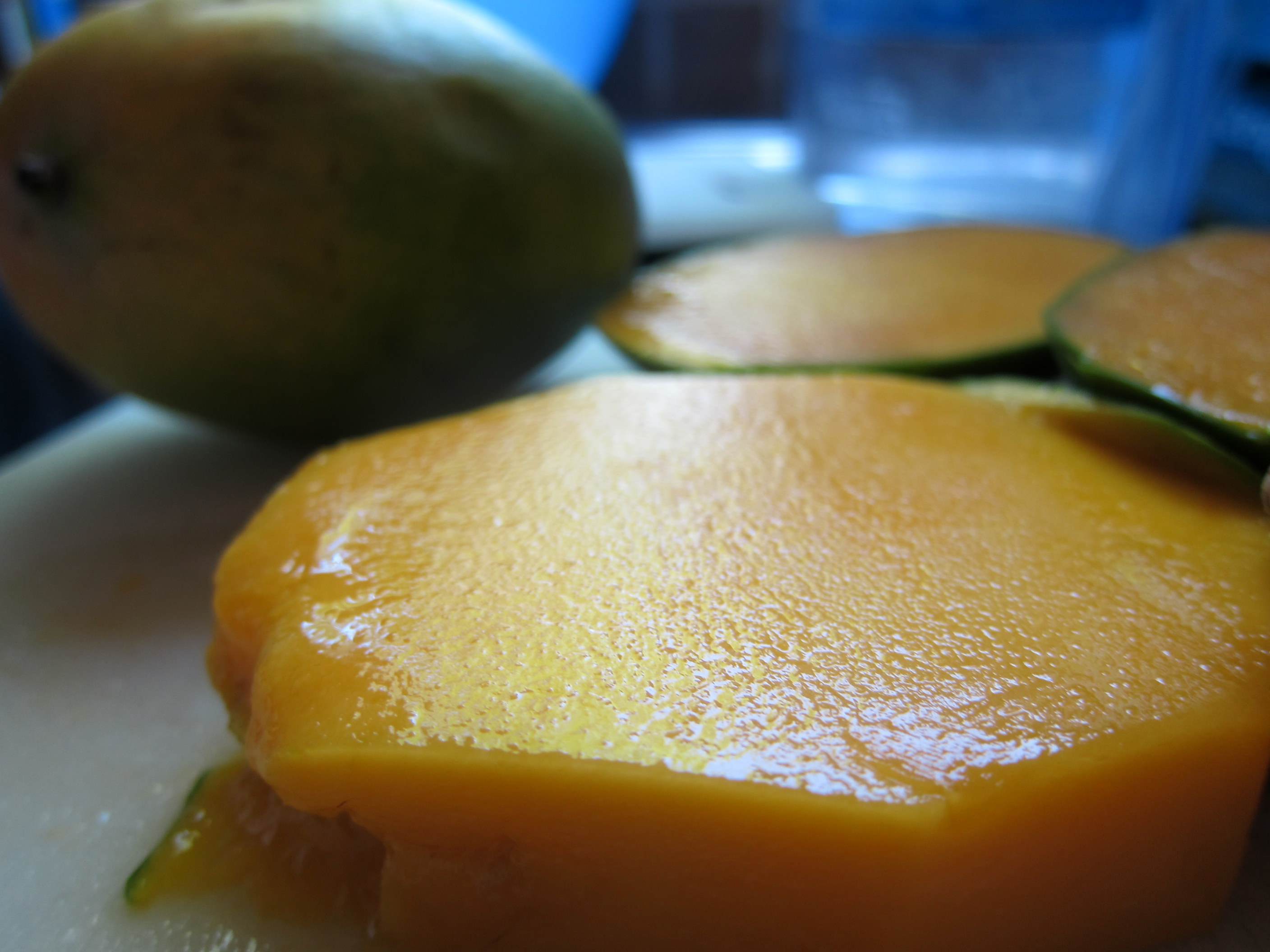
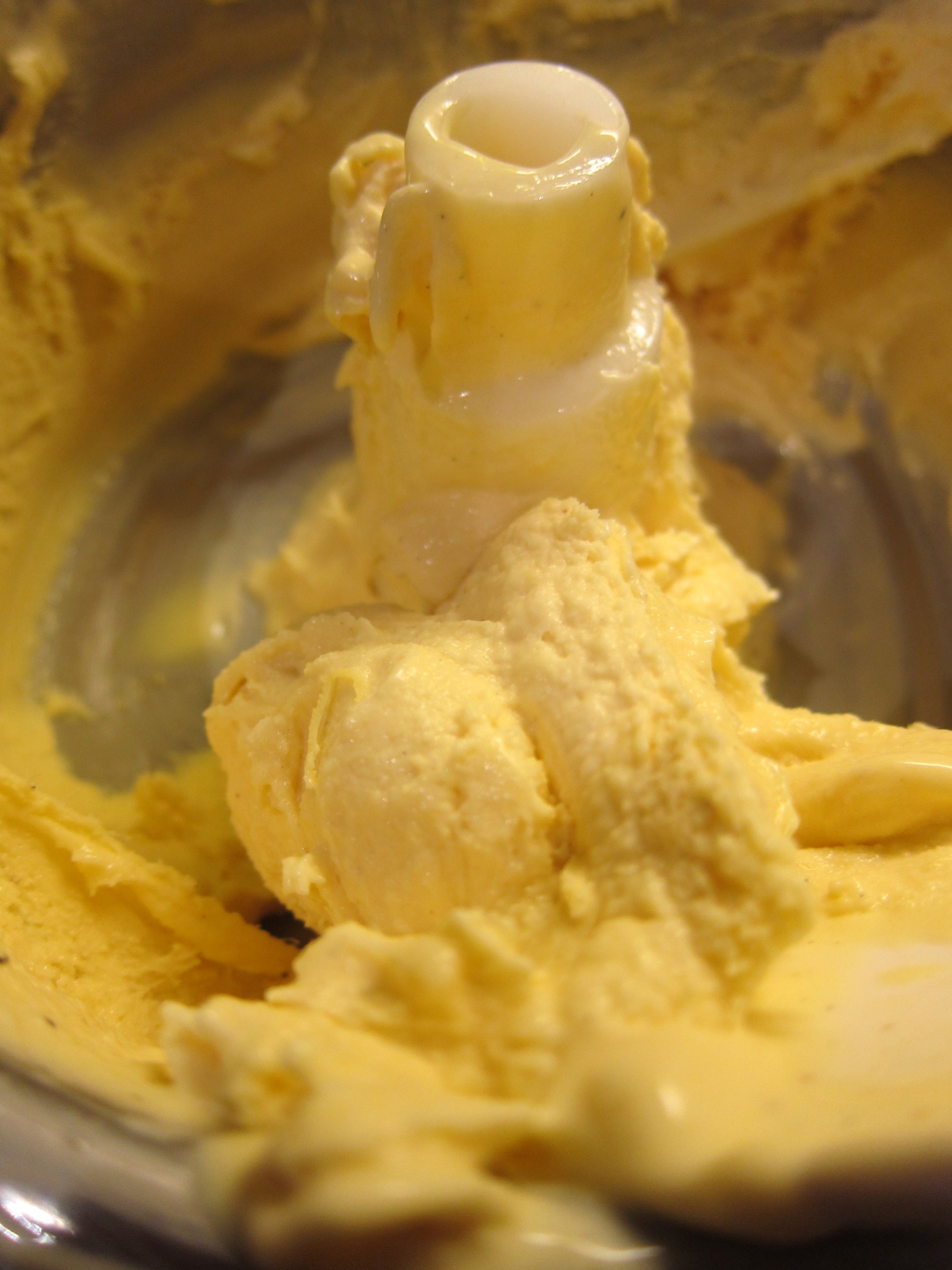
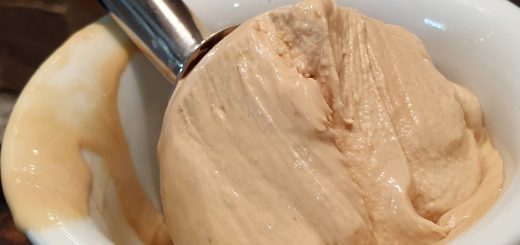
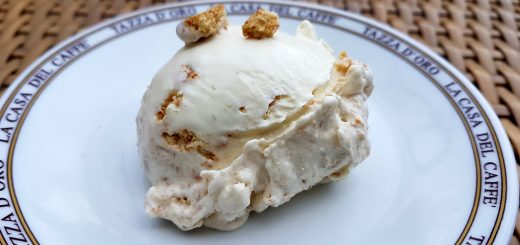



I really enjoyed the article. I can’t wait to try the recipe. Thanks!
Jordan,
Thanks – glad to hear it!
Hi Anders, I am so pleased to have just discovered your site! I am ice cream making fanatic, so it’s nice to find someone else who is similarly possessed. I enjoyed reading this article, and did not know that fresh ginger can curdle the milk/cream. I make fresh ginger ice cream by heating grated ginger in the milk/cream to a bare simmer, then remove from heat and let it steep for about 30 minutes. I have done this several times and have not had a problem with curdling. Anyway, the recipe looks wonderful – I love the combination of ginger and mango.
Hi Janet!
Good to hear from an ice cream-kindred spirit 😉
On the ginger/dairy-debate, I must say that I am beginning to long for a more detailed, scientific explanation of when – exactly – such curdling is likely to take place, and what – more exactly – is supposed to trigger it! Pending that, I am very happy to hear that you only have good experience of mixing fresh ginger and dairy 🙂
Hej Anders,
thank u for your site and all that delicious ice cream recipe. I was wondering if you could try and write a recipe on the Indian ice cream called Kulfi. I think it is a starch based ice cream without egg or cream. You have convinced me in to buying an ice cream maker finally.
Raj, Sweden.
Hej Raj,
Really glad to hear you like the site! And kulfi, the delicious Indian ice cream which I personally love dearly, is already on my to-do list of future posts so keep up hope 🙂
UPDATE: And here it is – the post on how to make delicious Kulfi ice cream!
Awaiting eagerly for your kulfi recipe! I have One more question and that is, can we use potatismjol (potato flour)instead of other starches mentioned earlier? My uneducated wild guess would be that in taste and consistency, PM will resemble arrow root.
Raj,
Generally speaking, starches should be pretty interchangable. There may be slight differences, but you should probably not have any problems using potato starch 🙂
We just made this, and since we didn’t have any fresh ginger, we added a few pieces of candied ginger, about a tablespoon’s worth, maybe just a bit more than that, run thru the food processor with a bit of the custard, and the taste was excellent!! We’ll try it with the fresh ginger next time.
this recipe is definitely a keeper.
I want to make this but eggless.
Which base would you recommend?
Please advice
Dear Meenakshi,
For great simplicity, you could use this recipe, based on sweetened condensed milk. Otherwise, try the Sicilian gelato-base! Best of luck!
How much sugar is needed for the recipe? It’s not clear to me what “125 ml (0.5 cup) + 100 ml (about 0.4 cup) sugar” is. Does that mean we want 225 mL /0.8 cups of sugar?
Hi Klue,
Perhaps the “division of sugar” in this recipe was unnecessarily complicated: it was merely there to indicate that the larger parts is there to satisfy the requirements of the base, and the rest of the sugar to sufficiently sweeten the mango puree. For practical purposes, the totality is what is interesting so: 225 ml (= just a little short of 1 cup) sugar. I’ve made that clearer in the recipe now:-).